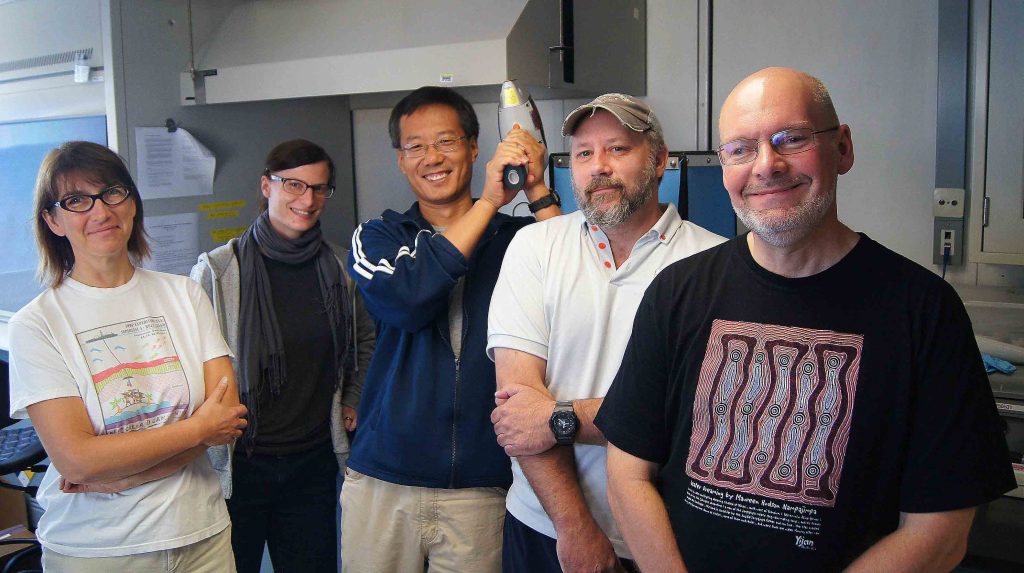
The Chemistry of Cores
Petrologists identify minerals using tiny slices of the rock called thin sections; geochemists identify the chemical characteristics of these rocks. Together this information can build a more complete picture of the core.
Basalt looks uniformly black/grey to the naked eye, and different types of basalt look very similar in a thin section. Breaking the rock down to its chemical composition can show where it varies from one chemical type to another, defining a “unit” boundary or areas where the rocks are changing. The amount of rock we recover can be pretty low, ~12% for U1440B, so it’s possible we miss classifying units.
According to geochemist Maria Kirchenbaur, “The more data you have, the more you know about the magmatic (igneous) sequence of material we’re in”.
Chemical analysis of rocks gives relative levels of different major elements (silicon, aluminum, iron, magnesium, to name a few) and trace elements (such as chromium and zirconium). These results help confirm whether we have retrieved the rock that scientists are seeking. When drilling can no longer continue in a hole at a given site, a decision needs to be made about starting a new hole. If we have met the science objectives for that drill site, beginning a new hole at the same site is not necessary. Geochemical data can help make that determination.
Despite the excellent equipment onboard the JR, much of the chemical analysis has to wait until scientists return to their land-based labs since only sixteen different elements can be measured at sea. Obtaining data for these few elements takes three to four days of preparation and measurement when using the JR’s Inductively Coupled Plasma Atomic Emission Spectrometer or ICP. To make the most effective use of time and equipment, analyses are only completed in groups of twenty (or more) samples.
The X-Ray Fluorescence Spectrometer (XRF) can provide a quick check of a rock’s chemistry while waiting for the labor-intensive ICP. XRF can be done “in situ”—on cut core samples without any further preparation but can also be used with ground (“powdered”) rock samples. It looks like Marvin the Martian’s ray gun; it even shoots a beam of X-rays at the rock. When hit with X-Rays, each element “glows” with a characteristic wavelength of energy.
Though the analysis techniques are different, both the ICP and XRF absorb and measure the energy “signatures” emitted by atoms in a given sample of rock. The two instruments complement each other by collecting data on many of the same elements. These results allow geochemists to confirm their “map” of the elemental make-up of each core section.
The chemical analyses on the cores from Expedition 352 are being compared with other volcanic rocks in the Izu-Bonin subduction system in addition to rocks from ophiolite sequences found on land. One of the big science questions of Leg 352 is whether these land ophiolites are related to the volcanic rocks being drilled here. Look for more information on ophiolites from geochemist Jeff Ryan in a future blog post.